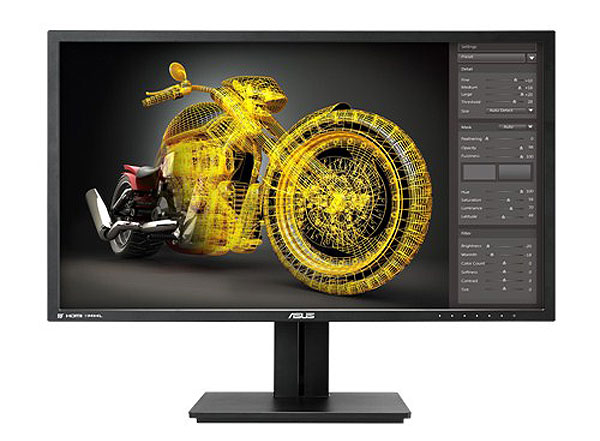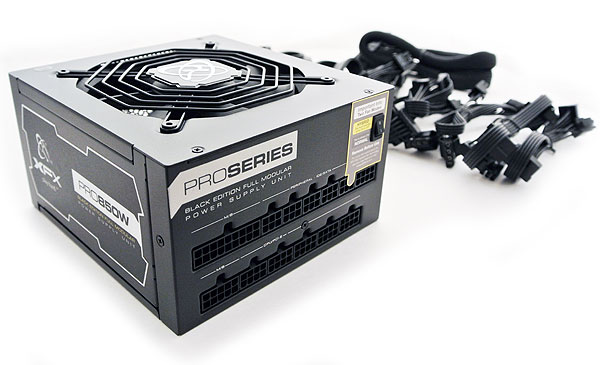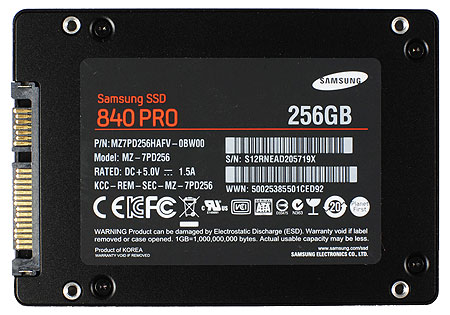Sapphire's Vapor-X R9 290X 8GB: The More, The Merrier?
How We Tested Sapphire's Vapor-X R9 290X 8GB
Benchmarking Hardware And Software
We're interested to see what the extra RAM provides for the Radeon R9 290X when it comes to game performance. Sapphire's Vapor-X is factory overclocked, though, so in order to isolate the difference we need to set our reference Radeon R9 290X to the same 1030 MHz core and 1375 MHz memory clocks. Because of this, any performance delta between the two should be a result of the extra memory (although Sapphire's improved cooler will probably affect the results, too, by allowing the GPU to stay in a boosted state for longer periods).
We also wanted to see how Sapphire's new product compares to its main competition, the GeForce GTX 970. It wouldn't be fair to compare this premium 290X specimen to a run-of-the-mill reference card, so we opted for EVGA's Superclocked GeForce GTX 970. With an 1165 MHz nominal GPU clock, it is 115 MHz higher than the reference specification. It's 1750 MHz GDDR5 memory is standard for the series, thoguh.
We're testing games at what we consider to be smooth, playable settings. That means a minimum of 30 FPS, and an average of 40 FPS or more. At 4K resolution, this usually requires lowering a significant amount of detail, but we want to produce meaningful results. Conversely, we should be able to crank up the details at 1080p.
We believe that the Vapor-X's memory advantage will show up when gaming at high resolutions (if at all), so we need a 4K display to test our theory. To this end, we chose ASUS' PB287Q. Unlike older models that require splitting a single video stream into two HDMI inputs, this 28" display is capable of displaying 3840x2160 video at 60 Hz over a single DisplayPort 1.2 cable. With a 1 ms GTG response time, 157 pixels-per-inch, and 10-bit color, this is a beautiful example of a 4K gaming monitor.
High-end graphics cards require a substantial amount of power, so XFX sent us its PRO850W 80 PLUS Bronze-certified power supply. This modular PSU employs a single +12 V rail rated for 70 A. XFX claims continuous (not peak) output of up to 850 W at 50 degrees Celsius.
We've almost exclusively eliminated mechanical disks in the lab, preferring solid-state storage for alleviating I/O-related bottlenecks. Samsung sent all of our labs 256 GB 840 Pros, so we standardize on these exceptional SSDs.
| Header Cell - Column 0 | Test System |
|---|---|
| CPU | Intel Core i7-3960X (Sandy Bridge-E), 3.3 GHz, Six Cores, LGA 2011, 15 MB Shared L3 Cache, Hyper-Threading enabled. |
| Motherboard | ASRock X79 Extreme9 (LGA 2011) Chipset: Intel X79 Express |
| Networking | On-Board Gigabit LAN controller |
| Memory | Corsair Vengeance LP PC3-16000, 4 x 4 GB, 1600 MT/s, CL 8-8-8-24-2T |
| Graphics | Sapphire Vapor-X R9 290X 8GB1030 MHz GPU, 8 GB GDDR5 at 1375 MHz (5500 MT/s)AMD Radeon R9 290X Reference1000 MHz GPU, 4 GB GDDR5 at 1250 MHz (5000 MT/s)(overclocked to 1030 MHz GPU, 4 GB GDDR5 at 1375 MHz (5500 MT/s) for game tests)EVGA GeForce GTX 9701165/1365 MHz GPU, 4 GB GDDR5 at 1753 MHz (7012 MT/s) |
| SSD | Samsung 840 Pro, 256 GB SSD, SATA 6Gb/s |
| Power | XFX PRO850W, ATX12V, EPS12V |
| Software and Drivers | |
| Operating System | Microsoft Windows 8 Pro x64 |
| DirectX | DirectX 11 |
| Graphics Drivers | All Radeon cards: AMD Catalyst 14.9GeForce GTX 770: Nvidia 344.60 WHQL |
| Benchmarks | |
|---|---|
| Watch Dogs | Version 1.04.497, Custom THG Benchmark, 90-sec FRAPS, Driving |
| Arma 3 | V. 1.26.126.789, 30-sec. Fraps "Infantry Showcase" |
| Battlefield 4 | Version 1.3.2.3825, Custom THG Benchmark, 90-Sec |
| Assassin's Creed IV: Black Flag | Custom THG Benchmark, 40-Sec |
| Thief | Version 1.6.0.0, Built-in Benchmark |
| Middle earth: Shadow of Mordor | Version 1.0.101.4672, Built-In benchmark |
| Alien: Isolation | Version 1.05, Built-In benchmark |
Get Tom's Hardware's best news and in-depth reviews, straight to your inbox.
Current page: How We Tested Sapphire's Vapor-X R9 290X 8GB
Prev Page A Double Helping Of Ram Next Page Battlefield 4, Shadow Of Mordor, Alien: Isolation, Arma 3Don Woligroski was a former senior hardware editor for Tom's Hardware. He has covered a wide range of PC hardware topics, including CPUs, GPUs, system building, and emerging technologies.
-
Janithdalw Very narrow difference in FPS between the R9 290X 8GB and R9 290X 4GB. The R9 290X 4GB is more than enough. More VRAM doesn't make much difference. I think Nvidia also released an 8GB version of the GTX 980. I would like to see how much FPS can the GTX 980 renders on 4K resolution. I guess even the GTX 980 8GB won't reach 60 FPS on 4k resolution.Reply -
bryanlarsen All the games you're testing are FPS games or have FPS style graphics. Why not also test other style of games, games that people are more likely to play at 4K? Civilization: Beyond Earth, for example.Reply -
JeanLuc I'm not sure if I agree entirely with the conclusion. For me this is a win for the Saphire Vapour X 290x over a reference 290x (that's been overclocked to match the card it's going up against) rather then then a victory for 8gb over 4gb. The reason I say this is although the 290x is sound piece of tech reference coolers AMD choose to stick on the 290x are really poor and cause cards to throttle underload.Reply
If 4Gb's wasn't enough then I would have expected to have seen the minimum fps nose dive, falling behind by 10% to 15% suggests the card wasn't boosting or was holding the clocks back to keep it from overheating. The only other explanation might be the choice of VRAM providers i.e some use Hynix others use Elpida and sometimes Samsung. -
firefoxx04 stopped reading at "Sapphire is not considered a high end brand".Reply
What are they supposed to do? They sell the best AMD has to offer with some of the best coolers on the market. -
Wisecracker Not sure what difference it would ultimately make, but I suspect the sweet spot is 5760x1080 until 4K enters the mainstream (if ever). Good to know 4K will play, but Eyefinity is the logical path forward despite the push from 'early adopters' wanting 4kReply
Impressive Noise and Temps -- even if compared to the craptastic reference design. At first look though, does not look to be much of a change from OEM 'aftermarket' coolers on the 290X.
-
firefoxx04 No crossfire test? Umm.. the card by its self can barely manage 4k and thats when you beat the settings down far enough to where 8GB is no longer needed.Reply
VRAM in crossfire is not 'doubled' when two cards are used so to compensate you need to have cards with more vram in the first place. Big oversight imo. Mine as well not even test the card by its self when we know 9 times out of 10 4GB is more than enough. -
airborn824 Were is SoM with ultra textures in 1440p? that is the whole point of this card. compare 4gb models at 1080p the 8GB is for higher rez and eyefinity set ups. sometimes my bias is just is so obvious. I like both companies i just dont like how much digging i have to do to find truth.Reply


